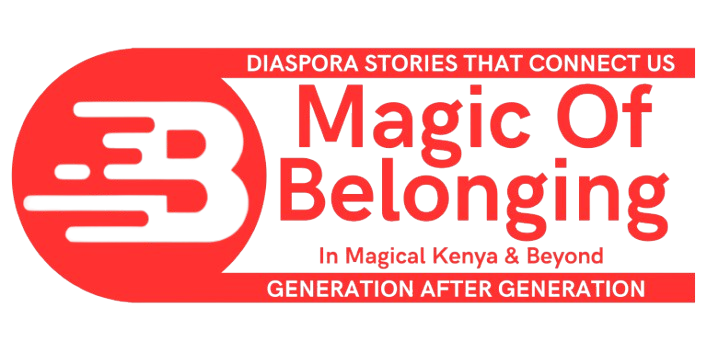In a quiet kitchen in California in the early 1980s, a young girl watched intently as her mother, a Kenyan immigrant named Wayua Muasa, combed through thick green-bar printouts, pencil in hand, decoding COBOL. Her mother had gone from a classroom teacher to a self-taught mainframe engineer—a move not driven by opportunity alone, but by unshakable resolve. This wasn’t just coding. This was survival. It was sacrifice. And for Mwende Window Snyder, these early experiences would become the foundation of a life dedicated to protecting the digital world.
Born in 1975 to an American father and a Kenyan mother, Snyder’s journey spans continents, cultures, and codes. Her very name—Mwende—meaning “beloved” in Kikamba, encapsulates the grounding of a Kenyan identity that has quietly powered one of the most transformative cybersecurity careers of our time. As the digital world exploded, Snyder stood at its helm, not as an outsider peering in, but as a bridge—between people and machines, cultures and protocols, past and future.
A Foundation in Kenyan Wisdom
Mwende’s mother, Wayua, grew up in the heart of Machakos County. There, scarcity wasn’t a concept—it was life. Her days were marked by resilience: one sweater shared between sisters, one chance at education, and a dream big enough to cross oceans. She earned a scholarship to study in Boston in the 1960s, navigating the racial tensions of America while holding tight to the communal ethos of her Kenyan roots.
She would later become an early pioneer in American technology, bringing her daughter along with her—teaching her how to debug, how to think critically, how to build with care and foresight. Those long evenings at the kitchen table weren’t just technical tutorials. They were spiritual rites. “My mom worked incredibly hard to make sure I had every opportunity,” Snyder once said. What Wayua instilled was more than skill—it was identity, one rooted in Harambee, the Kenyan call for pulling together.
“She basically revolutionized security for the entire internet,” said a colleague. Snyder wasn’t just teaching developers how to secure systems—she was teaching corporations how to listen, how to collaborate, how to build community around safety.
The Ethos of Curiosity and Responsibility
As a student at Boston College in the early 1990s, Snyder didn’t fit the mold. While her peers partied or pursued standard tech internships, she was digging through MIT flea markets and IRC channels, deep in the folds of the hacker underground. She adopted the handle “RosieRiv,” a nod to Rosie the Riveter and her own feminist defiance in a male-dominated digital world.
On her way she met a copy. The copy warned the Little Blind Text, that where it came from it would have been rewritten a thousand times and everything that was left from its origin would be the word “and” and the Little Blind Text should turn around and return to its own, safe country.
Her passion wasn’t driven by notoriety, but by a deep sense of curiosity—and responsibility. She questioned everything: “What’s keeping my data separate from yours? What keeps a program from crashing a whole system?” These weren’t just academic musings. They were real, systemic vulnerabilities—and Snyder saw them with clarity born of both cultural heritage and hacker instinct.
To her, hacking was never about destruction. It was about understanding. It was about fixing what was broken before harm could be done. That very philosophy would later define her legacy at Microsoft and beyond.
Building the Blueprints for a Safer Internet
When Snyder joined Microsoft in the early 2000s, its software was ubiquitous—but riddled with holes. Her role wasn’t just to patch systems—it was to overhaul an entire culture. She co-authored the Security Development Lifecycle (SDL), mandating that security be integrated into every phase of software design. This was a radical idea. Until then, security had always been an afterthought.
But Snyder didn’t stop there. Drawing from her experience with hacker networks—and perhaps unconsciously from Kenyan conflict resolution models—she launched the Blue Hat Conference, an unprecedented gathering where hackers and Microsoft engineers met face-to-face to share vulnerabilities and solutions. It was disruptive, controversial—and effective.
“She basically revolutionized security for the entire internet,” said a colleague. Snyder wasn’t just teaching developers how to secure systems—she was teaching corporations how to listen, how to collaborate, how to build community around safety.
Apple, Mozilla, and Open Systems
After Microsoft, Snyder took on leadership roles at Mozilla and Apple, bringing with her the same rigor and compassion. At Mozilla, she cemented Firefox’s reputation as a user-first browser, emphasizing open access and transparency. At Apple, she spearheaded the company’s “Apple Doesn’t Have Your Data” campaign, embedding encryption directly into iPhones, iPads, and iMessage.
Today, Snyder’s fingerprints are all over our digital landscape. From the secure apps we use to the standards companies follow, her work has become foundational.
This wasn’t just about privacy. It was about dignity. About control. About allowing people—from Silicon Valley elites to grassroots activists in Nairobi—to communicate freely, securely, without fear.
In this work, her Kenyan heritage reemerged. The idea that security isn’t just a technical feature but a human need mirrors the principle of utu—a Bantu value that affirms our shared humanity. Security, to Snyder, wasn’t lines of code. It was protection. It was trust.
Resilience in a Fragmented Tech World
In 2021, Snyder founded Thistle Technologies. Focused on securing embedded systems and Internet-of-Things (IoT) devices, the company was named after a thorny flower that survives in harsh conditions—a fitting metaphor. Thistle wasn’t built to win headlines; it was built to fix the invisible systems that quietly power modern life.
Here again, her Kenyan lineage surfaced. In naming her company after a plant known for enduring and protecting, Snyder was echoing the resilience she saw in her mother—and in her homeland. From securing smart medical devices to ensuring IoT patches work even in low-bandwidth environments, Thistle’s mission aligns perfectly with the spirit of service that shaped her.
What Her Journey Teaches Us
Today, Snyder’s fingerprints are all over our digital landscape. From the secure apps we use to the standards companies follow, her work has become foundational. But what makes her story extraordinary isn’t just the accolades or patents. It’s the philosophy behind them.
At MagicOfBelonging.com, her story reminds us that belonging isn’t just a place. It’s a code—written not in binary, but in belief. The belief that identity can be layered. That heritage is not an anchor, but a compass. That excellence comes from those who know how to stitch together broken systems—be they cultural or technological—with humility, brilliance, and heart.
In a world that often demands singularity, Snyder chose integration. American. Kenyan. Hacker. Engineer. Feminist. Founder. She made room for all of them, and in doing so, helped make the internet safer for all of us.
And in every firewall she’s built, in every encryption protocol she’s pioneered, there echoes a simple truth her mother showed her with every green-bar printout: hard things done with excellence last the longest.
Her code, like her roots, is unbreakable.
The Review
Samsung Galaxy A5 2017
A wonderful serenity has taken possession of my entire soul, like these sweet mornings of spring which I enjoy with my whole heart. I am alone, and feel the charm of existence in this spot, which was created for the bliss of souls like mine.
PROS
- Good low light camera
- Water resistant
- Double the internal capacity
CONS
- Lacks clear upgrades
- Same design used for last three phones
- Battery life unimpressive





























